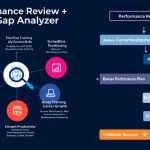ITSM Issue Analysis for Professional Services
Is this tool helpful?
How to Use the ITSM Problem Management Analysis Tool Effectively
Step-by-Step Guide
To make the most of our ITSM Problem Management Analysis Tool, follow these simple steps:
- Access the tool: Navigate to the ITSM Problem Management Analysis Tool on our website.
- Review the form: Familiarize yourself with the input field provided.
- Input industry-specific details: In the text area labeled “Specific characteristics or requirements of the professional services industry that may impact ITSM,” enter any relevant information about your professional services firm. This step is optional but can help tailor the analysis to your specific needs.
- Submit the form: Click the “Analyze ITSM Issues” button to generate your customized analysis.
- Review the results: Once processed, the tool will display a comprehensive ITSM analysis in the results section below the form.
- Copy the results: If desired, use the “Copy to Clipboard” button to easily save or share the analysis.
Sample Inputs
To illustrate how to use the tool effectively, consider these two sample inputs:
- Sample Input 1: “Our law firm handles sensitive client data and requires strict compliance with data protection regulations. We often work on time-sensitive cases and need to ensure minimal IT disruptions during critical case preparations.”
- Sample Input 2: “As a management consulting firm, we have consultants frequently working on-site with clients. Our ITSM needs to support remote work capabilities, ensure seamless access to our knowledge base, and maintain high security standards across various client environments.”
Understanding the ITSM Problem Management Analysis Tool
Definition and Purpose
The ITSM Problem Management Analysis Tool is a specialized calculator designed to help professional services firms identify, analyze, and manage common IT Service Management (ITSM) issues. By focusing on problem management, this tool aims to enhance the overall efficiency and effectiveness of ITSM processes within organizations.
Key Features and Benefits
- Customized analysis based on industry-specific inputs
- Comprehensive overview of common ITSM problems in professional services
- Insights into effective problem management methodologies and tools
- Guidance on implementing proactive problem management strategies
- Best practices for improving problem identification and management processes
Benefits of Using the ITSM Problem Management Analysis Tool
1. Enhanced Problem Identification
By utilizing this tool, professional services firms can more easily identify common ITSM issues specific to their industry. This improved identification process allows for faster response times and more targeted solutions, ultimately reducing the impact of IT-related problems on business operations.
2. Streamlined Problem Management Processes
The analysis provided by the tool offers insights into effective problem management methodologies and tools. This knowledge enables organizations to streamline their existing processes, leading to more efficient problem resolution and reduced downtime.
3. Proactive Approach to ITSM
With the tool’s focus on proactive problem management, firms can shift from a reactive to a proactive stance in their ITSM practices. This approach helps prevent issues before they occur, minimizing disruptions and improving overall service quality.
4. Industry-Specific Insights
By allowing users to input industry-specific details, the tool provides tailored recommendations that address the unique challenges faced by professional services firms. This customization ensures that the analysis is relevant and applicable to each organization’s specific needs.
5. Continuous Improvement
The tool’s suggestions for best practices and successful strategies from other firms in the industry promote a culture of continuous improvement. Organizations can learn from peers and industry leaders, adapting proven methods to enhance their own ITSM practices.
Addressing User Needs and Solving Specific Problems
Tackling Common ITSM Challenges
The ITSM Problem Management Analysis Tool addresses several key challenges faced by professional services firms in their IT service management:
- Incident overload: By focusing on root cause analysis and proactive problem management, the tool helps reduce the number of recurring incidents, alleviating the burden on IT support teams.
- Service disruptions: Through improved problem identification and management processes, organizations can minimize service disruptions, ensuring smoother operations and higher client satisfaction.
- Resource allocation: The tool’s insights allow for better resource allocation by highlighting areas that require more attention or investment in ITSM processes.
- Knowledge management: By emphasizing the importance of documenting and sharing problem-solving knowledge, the tool promotes better knowledge management practices within the organization.
Example Analysis and Recommendations
Let’s consider a hypothetical scenario where a mid-sized accounting firm uses the ITSM Problem Management Analysis Tool. Based on their input about handling sensitive financial data and needing to maintain system availability during tax seasons, the tool might provide the following analysis and recommendations:
- Common ITSM Problems Identified:
- Frequent system slowdowns during peak tax filing periods
- Data security concerns when sharing information with clients
- Difficulties in managing software updates across multiple workstations
- Recommended Analysis Methods:
- Implement performance monitoring tools to track system resources during high-load periods
- Conduct regular security audits and vulnerability assessments
- Utilize centralized patch management systems for streamlined software updates
- Proactive Problem Management Strategies:
- Develop a capacity planning process to anticipate and address system resource needs before tax seasons
- Implement a secure client portal for safe data exchange and collaboration
- Establish a change management process for controlled software updates and testing
- Best Practices for Improvement:
- Create a dedicated problem management team to focus on root cause analysis and long-term solutions
- Implement a knowledge base to document common issues and their resolutions
- Conduct regular ITSM process reviews and stakeholder feedback sessions
Practical Applications and Use Cases
1. Law Firm ITSM Optimization
A large law firm struggling with frequent IT service disruptions uses the ITSM Problem Management Analysis Tool to identify key areas for improvement. The tool highlights the need for better change management processes and suggests implementing a Configuration Management Database (CMDB) to track IT assets and their relationships. By following these recommendations, the firm reduces unplanned downtime by 30% over six months, significantly improving attorney productivity and client satisfaction.
2. Consulting Firm Remote Work Enhancement
A global management consulting firm faces challenges in supporting its consultants working remotely at client sites. The ITSM Problem Management Analysis Tool recommends implementing a robust remote access solution with multi-factor authentication and developing a comprehensive mobile device management policy. These changes result in a 40% reduction in remote access-related incidents and improved consultant productivity.
3. Accounting Firm Data Security Improvement
A mid-sized accounting firm uses the tool to address concerns about data security and compliance. The analysis suggests implementing data loss prevention (DLP) tools and conducting regular security awareness training for staff. After implementing these recommendations, the firm experiences a 50% reduction in security-related incidents and successfully passes its next compliance audit with flying colors.
Frequently Asked Questions (FAQ)
1. What types of professional services firms can benefit from this tool?
This tool is designed to benefit a wide range of professional services firms, including but not limited to law firms, accounting practices, consulting agencies, architectural firms, and engineering companies. Any organization that relies heavily on IT services to support their core business functions can gain valuable insights from this analysis tool.
2. How often should I use the ITSM Problem Management Analysis Tool?
It’s recommended to use the tool at least quarterly to stay on top of evolving ITSM challenges and industry trends. However, you may want to use it more frequently if your organization is undergoing significant changes, implementing new technologies, or experiencing recurring IT issues.
3. Can this tool help with ITIL compliance?
While the tool is not specifically designed for ITIL compliance, many of its recommendations align with ITIL best practices, particularly in the area of problem management. Using this tool can help organizations improve their ITSM processes, which can contribute to better alignment with ITIL frameworks.
4. How does the tool account for different sizes of professional services firms?
The tool’s analysis is based on the specific information you provide about your firm’s characteristics and requirements. This allows it to tailor recommendations to organizations of various sizes, from small practices to large multinational firms. The key is to be as specific as possible when inputting your firm’s details.
5. Can the tool help with specific software or hardware issues?
While the tool doesn’t provide troubleshooting for specific software or hardware issues, it can help identify patterns of problems that might be related to particular technologies. This can guide your IT team in focusing their efforts on the most impactful areas for improvement.
6. How does the tool stay updated with the latest ITSM trends and best practices?
Our team of ITSM experts regularly updates the tool’s knowledge base to reflect the latest industry trends, technological advancements, and best practices. This ensures that the analysis and recommendations provided remain current and relevant to the evolving landscape of IT service management.
7. Can I use this tool if we outsource our IT services?
Absolutely! In fact, this tool can be particularly valuable for organizations that outsource their IT services. It can help you identify areas where your service provider may need to improve and provide insights for more effective vendor management and SLA negotiations.
8. How does the tool handle industry-specific regulations and compliance requirements?
The tool takes into account the industry-specific information you provide, including regulatory and compliance requirements. It then factors these considerations into its analysis and recommendations, ensuring that the suggested ITSM improvements align with your industry’s specific needs and obligations.
9. Can this tool help improve customer satisfaction with our IT services?
Yes, by helping you identify and address common ITSM issues, the tool can contribute to improved service quality and reliability. This, in turn, often leads to higher levels of customer satisfaction, both for internal users and external clients who rely on your IT systems.
10. Is there a way to track progress over time using this tool?
While the tool doesn’t inherently track progress, we recommend saving your analysis results each time you use the tool. By comparing these results over time, you can gauge your organization’s progress in addressing ITSM challenges and implementing best practices. This approach allows you to measure improvement and identify areas that may require continued focus.
Important Disclaimer
The calculations, results, and content provided by our tools are not guaranteed to be accurate, complete, or reliable. Users are responsible for verifying and interpreting the results. Our content and tools may contain errors, biases, or inconsistencies. We reserve the right to save inputs and outputs from our tools for the purposes of error debugging, bias identification, and performance improvement. External companies providing AI models used in our tools may also save and process data in accordance with their own policies. By using our tools, you consent to this data collection and processing. We reserve the right to limit the usage of our tools based on current usability factors. By using our tools, you acknowledge that you have read, understood, and agreed to this disclaimer. You accept the inherent risks and limitations associated with the use of our tools and services.







